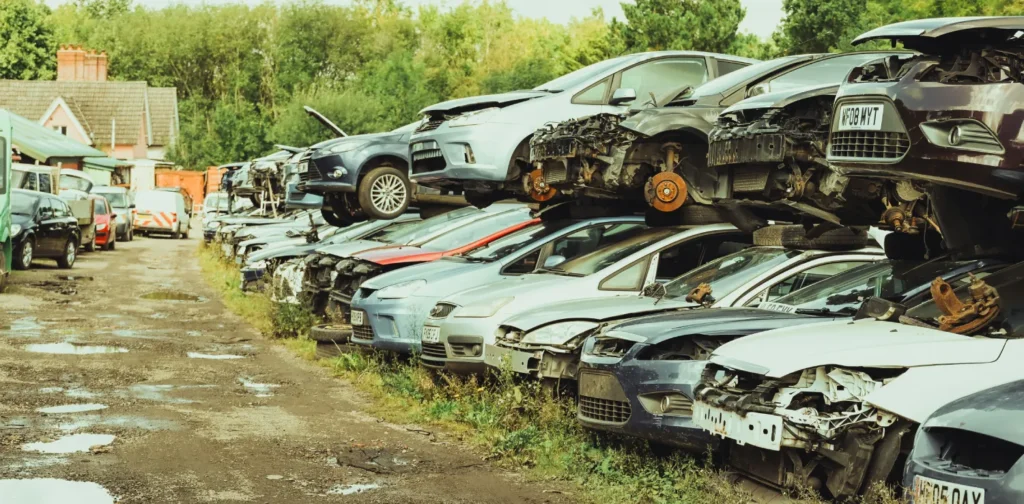Looking into the Vehicle Scrapping Program in China

Photo: Nik on Unsplash.
While owning a car is convenient for daily or long-distance mobility, the high amounts of carbon emitted by these vehicles are something of concern. The worldwide push for decarbonization requires the transport sector to comply through various efforts, such as promoting vehicle scrapping incentive programs. How is it implemented in China, a country with a massive population and high levels of emission?
Decarbonizing the Transport Sector
China’s transport sector contributed to 885.4 metric tons (Mt) of CO2 emissions in 2022, equivalent to 8.3% of the country’s total CO2 emission. The International Energy Agency states that the majority of these emissions comes from cars, which are still highly reliant on fossil fuels despite the electric vehicle boom.
Pushing the transition to newer and less carbon-intensive vehicles is a big part of the effort to decarbonize the transport sector. A report by the United Nations Environment Programme (UNEP) states that older vehicles often fail to meet modern emission standards and significantly emit higher amounts of carbon. Many countries have established vehicle scrapping programs to support this transition, as well as to stimulate the automobile industry. In China, the government has expanded the program’s coverage to drive better participation.
Vehicle Scrapping Program in China
The vehicle scrapping incentive in China is included in the Large-scale Equipment Renewal and Consumer Goods Trade-in Program. First established in 2024, the national-level incentive aims to promote the scrapping and replacement of old vehicles, agricultural machinery, home appliances, and other consumer goods.
Related to vehicle scrapping and replacement, the program accepts old passenger cars, trucks, buses, and ships. The target is to increase the volume of scrapped cars, increase second-hand car transactions, and reduce carbon and pollutant emission intensities from the transport sector. The government allocated approximately ¥300 billion (around 2 billion USD) in 2024 to support the program across a wide range of industries.
In January 2025, the government raised the program’s bond allocation to ¥500 billion (around 3.5 billion USD). The National Development and Reform Commission and the Ministry of Finance of China, as the responsible agencies, also published several key changes to the program, which expands the category and incentives given for vehicle scrapping and replacement. The changes include establishing the maximum subsidy for renewing cars, extending qualification for car scrapping, and increasing average subsidies for buses and agricultural machinery.
Several provinces have rolled out local incentive details with adjustment to the 2025 expansion, while others still introduce measures to ensure a smooth transition between the 2024 and 2025 program.
Just and Inclusive Transition
The growing global population translates to higher mobility. While this can lead to significant economic growth, we must also be mindful of the impacts we leave behind, especially in light of the climate crisis. Vehicle scrapping incentive programs become a way to support the progress of decarbonizing the transport sector.
Still, we must also look into other systemic solutions to address the issue, including strengthening public transportation networks to become more accessible and inclusive for all. The transition to less carbon-intensive vehicles must also be carefully done so that it does not cause social, economic, and environmental damage.
Editor: Nazalea Kusuma

Kresentia Madina
Madina is the Assistant Manager for Digital Publications at Green Network Asia. She graduated from Universitas Indonesia with a bachelor's degree in English Literature. She has three years of professional experience working on GNA international digital publications, programs, and partnerships particularly on social and cultural issues.


 Weaving the Thread Between the Last Elephant and the Floods in Sumatra
Weaving the Thread Between the Last Elephant and the Floods in Sumatra  Bringing Buried Rivers Back to Life Through Daylighting
Bringing Buried Rivers Back to Life Through Daylighting  Prescribing Beyond Profit for CEOs’ Anxiety
Prescribing Beyond Profit for CEOs’ Anxiety  An Interview with May Tan-Mullins, CEO and Provost of University of Reading Malaysia
An Interview with May Tan-Mullins, CEO and Provost of University of Reading Malaysia  An Interview with Eu Chin Fen, CEO of Frasers Hospitality
An Interview with Eu Chin Fen, CEO of Frasers Hospitality  The UK Government’s Funding Package Plan to Tackle Youth Unemployment
The UK Government’s Funding Package Plan to Tackle Youth Unemployment